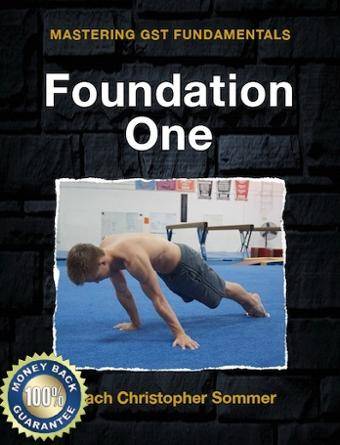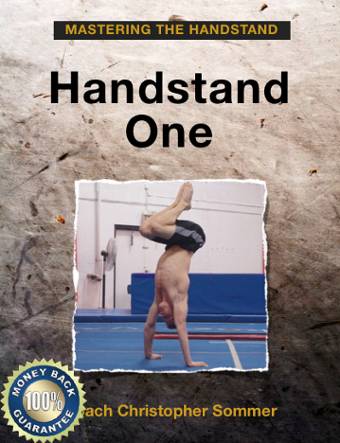Movement is cool. There’s no denying it. I’m sure we’ve all watched videos of parkour or capoeira guys and girls and sat amazed and wished we too could move like that. The problem is many of the skills and moves you see those guys and girls do have taken a lifetime to develop. One of the missing links for the rest of is often mobility.
Movement is cool. There’s no denying it. I’m sure we’ve all watched videos of parkour or capoeira guys and girls and sat amazed and wished we too could move like that. The problem is many of the skills and moves you see those guys and girls do have taken a lifetime to develop. One of the missing links for the rest of is often mobility. I’ve seen plenty of bodyweight training books and videos but barely any address this issue. They operate either on the assumption that you have no limitations to begin with or that as you go along you’ll develop the active range.
Great bodyweight movement, like the kind you’d see in street performance or the circus, takes the same incredible amount of strength, balance, and mobility as Olympic lifting. While I know some people decide to “learn” the Olympic lifts off YouTube, those who seek out a good coach will slowly develop the proper patterns and work on both the strength and mobility required at the same time.
I’d never seen that same holistic approach in bodyweight training until I came across Christopher Sommer’s new series on training. Many may know of his most famous book Building the Gymnastics Body. What most won’t know is that even this book – a relative starter pack for an elite junior gymnast – is well beyond the abilities of most adults.
For example, have a look at an L-sit. For that you need to be able to sit upright with the body held at an angle of at least ninety degrees. How many of you actually have that much hamstring flexibility or thoracic extension? Given that the mid-range score for active straight leg work in the FMS gives you about fifty degrees at the hip the first thing people will need to do to accomplish the L-sit is stretch. Then you need to add in the hip flexor strength to hold the thigh in that position, as well as a decent amount of shoulder extension since you’ll actually end up with the hands slightly behind the body – a position many guys who have spent years bench pressing won’t be able to achieve.

Reading Building the Gymnastics Body, it is easy to get a little despondent, as many of the so-called beginner skills and conditioning exercises are actually quite advanced. It’s more than a little funny to me that something that is commonly viewed as hard, like a muscle up, is not even considered an exercise to gymnasts. They do a muscle up just to get in the start position for the rings. The muscle up is to gymnastics what tying your shoes is to running.
So Building the Gymnastics Body is, in many cases, a step too far for most as a starting point. And that’s why Christopher Sommer came out with his new Foundation courses. I hesitate to call these watered down, but they are. They offer a great step-by-step guide to achieving gymnastics skills, starting at a very low point – ideal for most. The thing that really stands out for me is that every single exercise has a corresponding mobility drill to assist with its development.
Probably the skill most wanted by trainees is the ability to do a handstand, and Coach Sommer has just delivered again in the form of Handstand One (H1). I bought H1 a day or so after its release and then spent a day or so reading. Yet again he delivers in the exact same manner – a great breakdown of skills, mobility, and physical exercises to build the body towards the plan’s ultimate goal of a two-minute freestanding handstand.
One of the things I am most interested in with this dual approach is to see what else it allows you to do. The added mobility and supple strength from the handstand series should translate to better overhead squatting, barbell snatches, and other double overhead work. Typically when you need to start doing corrective work on people with the FMS system, you will need to address shoulder mobility early on. I know that single kettlebell work is a tremendous tool for working in a corrective manner while still getting in a tough session. Looking at the system that Coach Sommer has put together, I can’t help but feel the same way about his H1 plan in relation to the shoulders.

One of the strong points of the H1 system is that every single exercise comes with an accompanying video, so you can see firsthand what it should look like. That is also the downfall of this system as it means that unless you’ve got an Internet connection you can’t have a portable version.
Overall though, both the Foundation One and Handstand One courses are exceptional value to me. They contain a great systematic way of progressing skills and physical abilities that address the strength and mobility required simultaneously. For instructors looking for new ideas on bodyweight strength or for ways to add more difficult options into a Primal Move class, both of these courses are ideal. I’m personally looking forward to getting started on them in two weeks when I have finished my Ironman race (and I’m super jealous right now as we started teaching H1 material in our classes this week).
Foundation One and Handstand One are available at GymnasticBodies.com.






